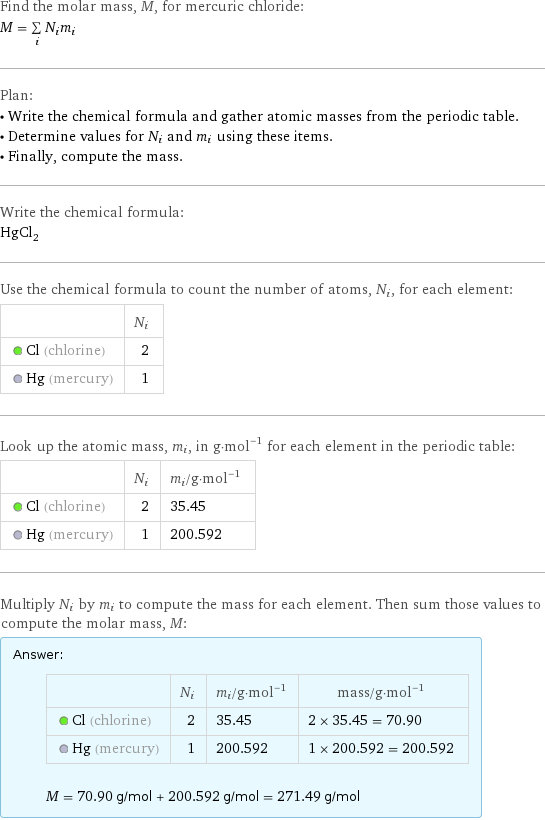Input interpretation

mercuric chloride | molar mass
Result

Find the molar mass, M, for mercuric chloride: M = sum _iN_im_i Plan: • Write the chemical formula and gather atomic masses from the periodic table. • Determine values for N_i and m_i using these items. • Finally, compute the mass. Write the chemical formula: HgCl_2 Use the chemical formula to count the number of atoms, N_i, for each element: | N_i Cl (chlorine) | 2 Hg (mercury) | 1 Look up the atomic mass, m_i, in g·mol^(-1) for each element in the periodic table: | N_i | m_i/g·mol^(-1) Cl (chlorine) | 2 | 35.45 Hg (mercury) | 1 | 200.592 Multiply N_i by m_i to compute the mass for each element. Then sum those values to compute the molar mass, M: Answer: | | | N_i | m_i/g·mol^(-1) | mass/g·mol^(-1) Cl (chlorine) | 2 | 35.45 | 2 × 35.45 = 70.90 Hg (mercury) | 1 | 200.592 | 1 × 200.592 = 200.592 M = 70.90 g/mol + 200.592 g/mol = 271.49 g/mol
Unit conversion

0.27149 kg/mol (kilograms per mole)
Comparisons

≈ 0.38 × molar mass of fullerene ( ≈ 721 g/mol )

≈ 1.4 × molar mass of caffeine ( ≈ 194 g/mol )

≈ 4.6 × molar mass of sodium chloride ( ≈ 58 g/mol )
Corresponding quantities

Mass of a molecule m from m = M/N_A: | 4.5×10^-22 grams | 4.5×10^-25 kg (kilograms) | 271 u (unified atomic mass units) | 271 Da (daltons)

Relative molecular mass M_r from M_r = M_u/M: | 271